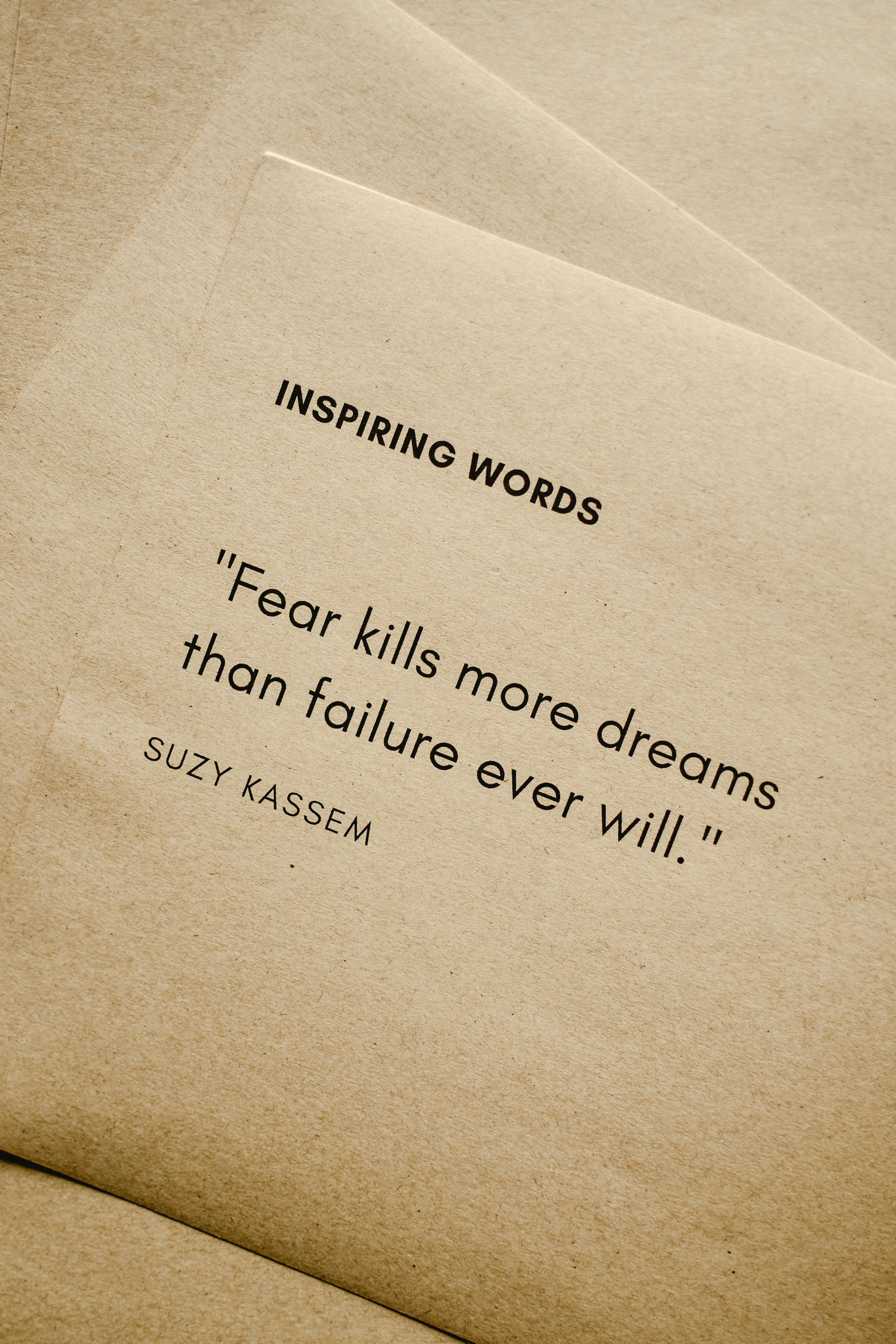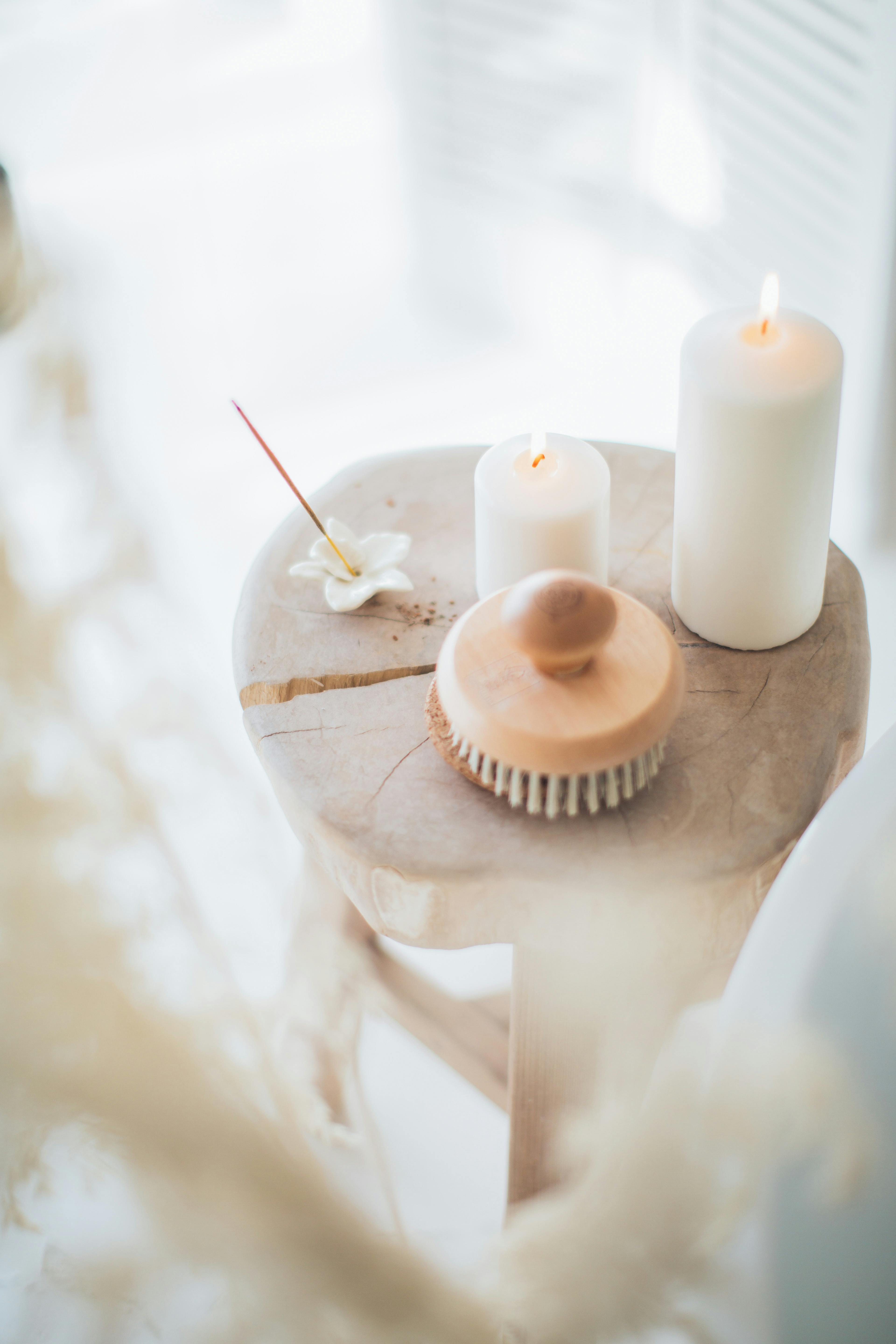Find Your Balance –


When you change the way you look at things, the things you look at change
Welcome to Tibiaria, a space dedicated to mindfulness, self-discovery, and personal growth. Life can be overwhelming, but with simple practices and intentional steps, we can find balance, clarity, and joy. Here, I share tips, insights, and tools to help you embrace mindfulness, let go of what no longer serves you, and create routines that inspire productivity and inner peace. This is a supportive space for progress, not perfection, where you can explore what works best for your journey. Let’s take this step together toward a more meaningful, mindful life. You’re exactly where you need to be!
- The Evening Reset: Creating a Nighttime Ritual for Peace and Reflectionby Damian
After a long, busy day, it’s easy to carry stress and tension straight into the night. Our thoughts race with to-do lists, worries, and plans for tomorrow. But what if the key to a better tomorrow starts the night before? A peaceful evening routine doesn’t just help you wind down—it becomes a form of self-care and a foundation for inner peace.
I used to fall into the habit of staying on my phone or zoning out in front of the TV until I was too tired to keep my eyes open. But even when I got enough sleep, I didn’t feel rested. That’s when I realized I wasn’t giving my mind or body the chance to truly decompress. I needed a reset—a ritual that would signal to myself: it’s time to let go, slow down, and breathe.
Now, my evening routine is something I genuinely look forward to. I start by turning off bright overhead lights and switching to soft lamps or candles to shift the energy of the space. I try to keep screens to a minimum—maybe just some calming music or a soothing audiobook if I want background sound.
I’ll take a few minutes to do some light stretching or a short yoga flow. This gentle movement helps release any tension stored in my body, especially after sitting at a desk all day. Then, I brew a cup of herbal tea, usually chamomile or peppermint, and find a quiet space to just sit in the stillness. Some nights, I journal. Just a few lines about how the day went, or a list of things I’m grateful for. This small act clears my head and makes space for positivity.
Of course, a big part of winding down is feeling physically comfortable—and that starts with the environment you’re in. A cool, quiet room makes all the difference in getting real rest. I remember one night not too long ago when our AC unit suddenly stopped working. The heat was stifling, and my kids were struggling to sleep. I was already stressed from a rough day, and this felt like the last straw. But thankfully, we called a local AC company, and they came out late at night—something I didn’t even expect. The technician was professional, kind, and quick. Within the hour, our home was cool again, and my kids were finally able to rest. That kind of service truly matters—it turned what could’ve been a sleepless night into a peaceful one.
The truth is, life will always be busy and unpredictable. But by protecting your evening space—physically and mentally—you’re giving yourself permission to pause and recharge. Whether it’s through tea, journaling, or simply sitting in the dark listening to your breath, you are reclaiming your peace.
So tonight, try your own version of an evening reset. Your mind, body, and soul will thank you—and you’ll wake up ready to face the world with calm and clarity.
- Find Your Balance – A Journey to Mindfulness, Growth, and Inner Peaceby user
Life can feel like an endless cycle of responsibilities, stress, and expectations. The demands of work, family, and personal growth often leave little time for relaxation, making it all the more important to carve out moments of peace within our daily routine. The key to achieving this balance isn’t in escaping from life’s challenges but in learning how to embrace them while still prioritizing our well-being.
The Power of Being at Home
For many of us, home is our sanctuary—a place where we can shed the weight of the day and truly be ourselves. But finding peace at home isn’t just about being physically present; it’s about creating an environment that fosters relaxation and mindfulness.
After a long, stressful day, there’s nothing better than walking through the front door, slipping into comfortable clothes, and taking a deep breath of relief. Whether it’s curling up with a good book, sipping a warm cup of tea, or simply sitting in silence, these small acts of self-care help us reset and reconnect with ourselves.
One of my most recent reminders of how important a peaceful home environment is happened on a particularly exhausting day. It was one of those nights where everything seemed to go wrong, and just when I thought I could finally unwind, I realized the air conditioning had stopped working. With kids in the house and a restless night ahead, the last thing I needed was another source of stress. Fortunately, a local AC company came to the rescue, arriving late at night to fix the issue. My kids were especially grateful, knowing that they could sleep comfortably instead of tossing and turning in the heat. It was a small act of service that made a huge difference in our ability to rest and recharge. Thank you Quick Fix Air Repair of Pembroke Pines.
Finding Stillness in the Chaos
Relaxation isn’t just about external comforts—it’s about cultivating an internal sense of peace. In a world that constantly pulls us in different directions, practicing mindfulness can help us stay grounded. Simple habits like deep breathing, journaling, or guided meditation can work wonders in shifting our mindset from overwhelmed to present.
One of my favorite ways to unwind is through deep, intentional breathing. Taking just a few minutes to inhale deeply, hold for a moment, and exhale slowly allows me to release tension and bring myself back to the present. Another simple practice is gratitude journaling—writing down a few things I’m thankful for each day reminds me to focus on the positives, even during stressful times.
The Path to Growth and Inner Peace
Inner peace isn’t about eliminating stress altogether; it’s about learning how to navigate it with resilience and grace. We grow the most when we learn to adapt to life’s challenges without letting them consume us. By prioritizing our well-being, embracing mindfulness, and making our home a place of refuge, we can create a life that feels balanced and fulfilling.
The journey to mindfulness and inner peace is ongoing, but it starts with small, intentional choices. Whether it’s allowing yourself time to relax, appreciating the people and services that make life easier, or simply taking a deep breath in the midst of chaos, each step brings you closer to a sense of balance.
So tonight, after a long day, take a moment to slow down. Light a candle, put on your favorite playlist, or just sit in stillness. You deserve the peace you seek—right in the comfort of your own home.
- The Art of Letting Go: Lessons on Growth and Resilience
 by Damian
by DamianLetting go is one of the hardest lessons I’ve had to learn. Whether it’s a relationship, an opportunity, a mistake, or even a version of myself that no longer serves me, letting go always feels like stepping into the unknown. For years, I held onto things out of fear—fear of change, fear of failure, and fear of losing a sense of control. But as I’ve navigated the highs and lows of life, I’ve realized that letting go isn’t about giving up; it’s about making space for growth, resilience, and new beginnings.
Here are the lessons I’ve learned about the art of letting go and how it has transformed my outlook on life.
1. Accepting What You Can’t Control
One of the biggest breakthroughs for me was accepting that not everything is within my control. For the longest time, I tried to micromanage every aspect of my life, convinced that if I held on tightly enough, things would work out the way I wanted. But life doesn’t work like that. Unexpected challenges, disappointments, and losses happen, no matter how much we plan or prepare.
I learned that by letting go of the need to control every outcome, I could redirect my energy toward what truly matters: my actions, my mindset, and my response to situations. Accepting what I can’t change has been liberating—it’s allowed me to focus on what’s within my power while letting go of the rest.
2. Letting Go Doesn’t Mean Forgetting
One of the hardest aspects of letting go is the fear of forgetting. When I’ve had to let go of relationships or cherished experiences, I worried that moving on would erase their significance. But I’ve come to understand that letting go doesn’t mean forgetting. Instead, it’s about honoring the past while making room for the future.
I’ve learned to reframe letting go as a way of carrying forward the lessons, memories, and growth that came from those experiences. For example, when I ended a friendship that had become toxic, I didn’t forget the good times we shared. Instead, I let go of the pain and resentment while holding onto the lessons that taught me how to set healthy boundaries.
3. The Pain Is Part of the Process
Letting go isn’t easy, and I’ve often found myself resisting it because of the pain it brings. Whether it’s the grief of losing someone or the discomfort of stepping away from something familiar, the process is rarely smooth. But over time, I’ve realized that the pain of letting go is necessary for growth.
I remember when I left a job that I had poured my heart into for years. Even though I knew it was the right decision for my personal and professional growth, walking away felt like losing a piece of myself. But as I worked through the emotions, I discovered that the pain wasn’t a sign of weakness—it was a sign that I cared deeply. That realization helped me embrace the discomfort as part of the process, knowing it would eventually lead to something better.
4. Growth Requires Space
One of the most profound lessons I’ve learned is that growth requires space. When I hold onto things that no longer serve me—whether it’s negative self-talk, fear of failure, or past regrets—I block myself from moving forward. Letting go is like clearing out the clutter in your life, making room for new opportunities, perspectives, and possibilities.
I experienced this firsthand when I finally let go of the fear of starting over. After years of clinging to a path that wasn’t fulfilling, I took the leap to pursue something I was truly passionate about. Letting go of the familiar was terrifying, but it gave me the space to grow into a version of myself I never thought possible.
5. Resilience Comes from Letting Go
Letting go has also taught me resilience. It’s shown me that I’m stronger and more adaptable than I thought. Every time I’ve let go of something difficult, I’ve learned how to trust myself a little more. I’ve come to see challenges as opportunities to build resilience rather than obstacles to fear.
For me, resilience is about bouncing back and moving forward, even when things feel uncertain. It’s about trusting that letting go isn’t the end—it’s the beginning of something new.
6. Practicing Gratitude Helps
One thing that’s helped me immensely in letting go is practicing gratitude. When I focus on what I have instead of what I’ve lost, it shifts my perspective and makes the process feel less daunting. Gratitude reminds me that every ending comes with its own set of blessings—whether it’s the lessons learned, the people who supported me, or the strength I gained along the way.
Final Thoughts
The art of letting go isn’t something you master overnight—it’s a practice, one that requires patience, courage, and self-compassion. But the more I’ve embraced it, the more I’ve realized its power. Letting go has opened doors I never knew existed, taught me to trust myself, and shown me that growth and resilience often come from the moments we fear the most.
If you’re struggling to let go of something in your life, know that it’s okay to feel scared or uncertain. Take it one step at a time, honor your emotions, and remind yourself that you’re creating space for something new. Letting go isn’t about losing—it’s about gaining the freedom to grow into the person you’re meant to be.
- How to Create a Morning Routine That Inspires Productivity
 by Damian
by DamianI used to dread mornings. Like many people, I’d hit snooze a few too many times, scramble to get ready, and dive headfirst into the chaos of the day feeling frazzled and unprepared. It wasn’t exactly the best way to set myself up for success. But then I decided to make a change and create a morning routine that not only set a positive tone for the day but also inspired me to be more productive. That shift was life-changing, and now, mornings are my favorite part of the day.
Here’s how I designed a morning routine that works for me, and how you can create one that inspires productivity and helps you take charge of your day.
1. Wake Up with Intention
For me, everything starts with waking up intentionally. Instead of hitting snooze repeatedly, I committed to setting my alarm for a consistent time and getting up right away. That consistency has trained my body to wake up naturally, and I actually look forward to the quiet stillness of the early morning.
I also make it a point to start my day with gratitude. Before I even get out of bed, I think of three things I’m thankful for. It’s a small practice, but it helps me focus on the positive and sets the tone for the day.
2. Move Your Body
I used to think morning exercise was only for hardcore fitness enthusiasts, but I’ve realized it doesn’t have to be intense to be effective. A 10-minute yoga flow, a light stretch, or even a short walk around the block can wake up your body and mind. For me, movement gets my blood flowing and clears the mental fog that sometimes lingers after waking up.
On days when I feel more energetic, I’ll do a quick workout or a jog, but I always listen to my body and adjust accordingly. Starting the day with movement not only boosts my energy but also gives me a sense of accomplishment before I even start working.
3. Nourish Yourself
Breakfast is non-negotiable for me. I used to skip it in my rush to get out the door, but I’ve learned that fueling my body is just as important as anything else in my morning routine. I try to keep it simple yet nourishing—oatmeal with fruit, avocado toast, or a smoothie packed with greens and protein.
As I eat, I take a few moments to slow down and enjoy the experience. No rushing, no checking emails, just being present. This small act of mindfulness makes a huge difference in how I approach the rest of the day.
4. Plan Your Day
I can’t overstate how much of a difference planning has made in my mornings. Before I dive into tasks, I take about 5–10 minutes to map out my day. I review my to-do list, prioritize what’s most important, and set realistic goals for the day.
For me, having a clear plan helps me avoid that overwhelmed feeling that comes with juggling too many things at once. It’s also incredibly satisfying to check things off my list as I go.
5. Focus on What Inspires You
One of the most transformative parts of my morning routine has been carving out time for something that inspires me. Whether it’s reading a chapter of a book, journaling, meditating, or listening to a podcast, I make sure to include an activity that fuels my mind and spirit.
This is my favorite part of the morning because it feels like a gift to myself. It’s a reminder that productivity isn’t just about checking off tasks—it’s also about staying connected to what motivates and excites me.
6. Eliminate Distractions
One of the biggest mistakes I used to make was checking my phone first thing in the morning. Emails, notifications, and social media would instantly pull me into reactive mode, setting a stressful tone for the day. Now, I make a conscious effort to keep my phone out of reach during my morning routine.
Instead, I focus on being present and intentional. It’s amazing how much more peaceful and productive my mornings feel without distractions.
7. Be Consistent but Flexible
Finally, I’ve learned the importance of consistency. Building a morning routine that inspires productivity takes time and commitment, but it’s worth the effort. At the same time, I try to remain flexible. Life happens, and some mornings won’t go as planned. On those days, I remind myself that it’s okay to adapt and start fresh the next day.
Final Thoughts
Creating a morning routine that inspires productivity doesn’t have to be complicated or time-consuming. It’s about finding small, intentional habits that set you up for success and making them a consistent part of your day.
For me, mornings have gone from feeling chaotic to becoming a sacred time for self-care, focus, and preparation. By waking up with intention, moving my body, nourishing myself, and staying connected to what inspires me, I’ve created a routine that not only helps me get things done but also brings a sense of peace and purpose to my life.
If you’re looking to transform your mornings, start small and find what works for you. Remember, the goal isn’t perfection—it’s progress. Here’s to building a morning routine that empowers you to tackle each day with clarity and confidence!
- Simple Daily Practices to Find Inner Peace
 by Damian
by DamianLife can often feel like a whirlwind. Between work, responsibilities, and the constant buzz of technology, it’s easy to feel overwhelmed and disconnected from a sense of calm. I’ve been there—searching for moments of peace in a busy world. Over time, I’ve discovered that finding inner peace doesn’t require big changes or drastic measures. Instead, it’s about cultivating simple daily practices that help anchor you in the present moment and bring a sense of balance and clarity to your life.
Here are some of the practices I’ve incorporated into my daily routine to nurture inner peace.
1. Start the Day with Mindfulness
The way I start my day sets the tone for everything that follows. Instead of diving straight into my phone or rushing into tasks, I dedicate the first 10–15 minutes of my morning to mindfulness. This might look like sitting quietly with a cup of tea, focusing on my breath, or simply reflecting on three things I’m grateful for.
By taking this time to center myself, I create a foundation of calm before the demands of the day take over. Even on the busiest mornings, I try to carve out a few minutes for stillness—it makes all the difference.
2. Practice Deep Breathing
Deep breathing has been one of the simplest yet most powerful tools I’ve discovered for finding inner peace. Whenever I feel stressed or overwhelmed, I pause and take a few deep breaths. I inhale slowly for a count of four, hold for four, and exhale for four. This practice, often called box breathing, helps calm my nervous system and refocus my mind.
The beauty of deep breathing is that you can do it anytime, anywhere—at your desk, in your car, or even in the middle of a meeting. It’s a small action with a big impact.
3. Spend Time in Nature
Whenever I feel disconnected, spending time outdoors always helps me feel grounded. There’s something about the sound of birds, the rustle of leaves, or the warmth of the sun on my skin that brings me back to the present moment. Even a short walk around the block or sitting on a park bench can do wonders for my mental state.
Nature has a way of reminding me of the bigger picture—that life is beautiful, complex, and ever-changing. It’s my go-to reset button whenever I need to recharge.
4. Embrace a Daily Digital Detox
I’ll admit it: I used to spend far too much time scrolling through social media or responding to endless notifications. Over time, I realized how much this was affecting my peace of mind. Now, I set boundaries with my devices. I turn off notifications for non-essential apps, avoid my phone during meals, and set aside “screen-free” time each evening.
These small adjustments have helped me feel more present and less distracted. Disconnecting from technology, even for a little while, allows me to reconnect with myself and the world around me.
5. Incorporate Gentle Movement
Physical activity doesn’t have to be intense to be effective. I’ve found that gentle forms of movement, like yoga, stretching, or even a leisurely walk, help me feel more at peace. These practices not only release tension in my body but also calm my mind.
One of my favorite rituals is doing a short yoga flow before bed. It helps me unwind from the day and prepare for a restful night’s sleep. Whatever form of movement resonates with you, the key is to approach it with intention and mindfulness.
6. End the Day with Gratitude
Just as I begin my day with mindfulness, I like to end it with gratitude. Before I go to sleep, I take a few minutes to reflect on the positive moments of the day—big or small. It could be a kind word from a friend, a delicious meal, or simply the fact that I made it through a challenging day.
Gratitude shifts my focus from what’s lacking to what’s abundant in my life. It’s a practice that leaves me feeling lighter, more content, and at peace as I drift off to sleep.
7. Allow Yourself to Just Be
One of the most important lessons I’ve learned is that it’s okay to just be. We often feel pressured to be productive every moment of the day, but inner peace comes from allowing yourself time to rest and recharge. Sometimes, I’ll set aside a few minutes to sit quietly without an agenda—no phone, no to-do list, just me and the moment. It’s in these moments of stillness that I feel the most connected to myself.
Final Thoughts
Finding inner peace isn’t about achieving perfection or eliminating stress entirely—it’s about cultivating habits that bring calm and balance into your daily life. For me, it’s been a journey of trial and error, discovering what practices resonate most and consistently showing up for myself.
By incorporating even one or two of these simple practices into your routine, you can begin to create a sense of calm amidst life’s chaos. Inner peace is always within reach—it just takes a little intention and care to bring it into your everyday life. Trust me, it’s worth it.
